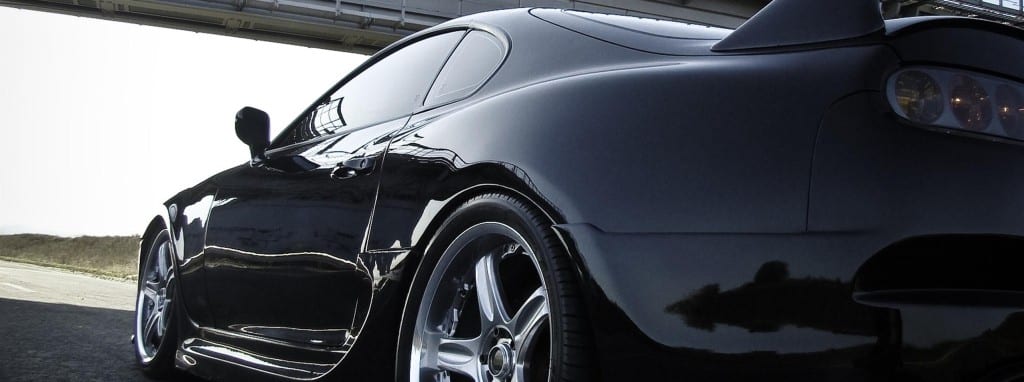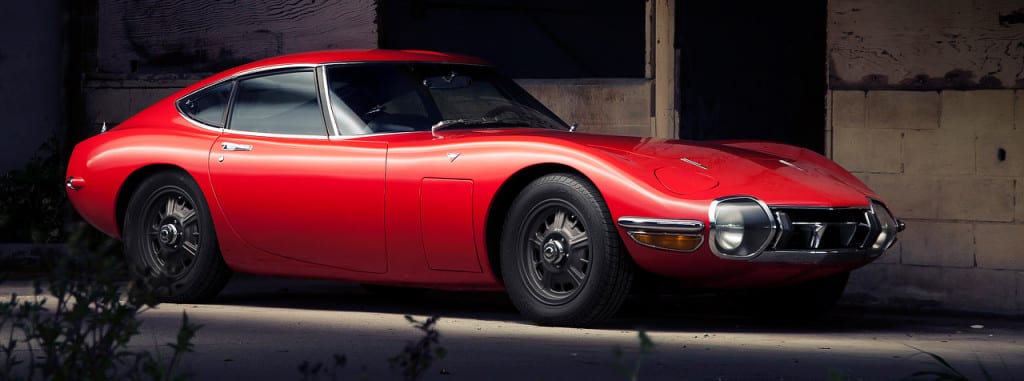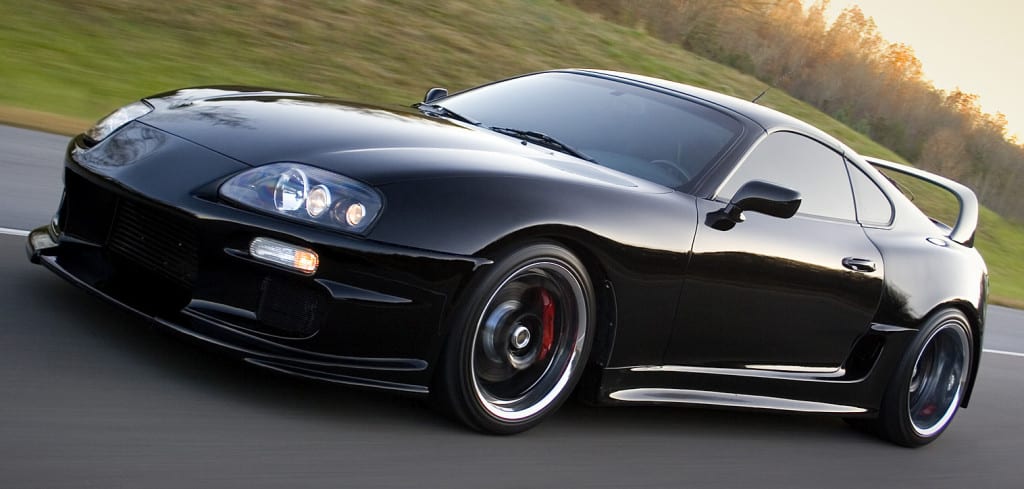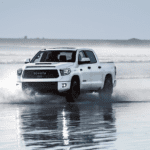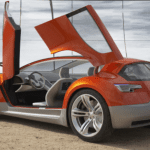Back in 2012, Toyota changed up its advertising slogan from 2004’s “Moving Forward,” to “Let’s Go Places.”
These five coolest Toyota-brand cars have successfully done both; moved forward in technology and innovation, and traveled many places. From the mountain passes of Japan to the bright lights of Hollywood, Toyota has moved into a place of lasting legacy.
Though arguably the coolest and certainly most scarce, these five cars represent only a fraction of the overall new and pre-owned inventory available at your Toyota dealer in Portsmouth.
History in the Making
Only 351 made, released in 1967, the Toyota 2000GT was the first car to give Japan competitive edge where it came to creating fast, advanced, sexy cars.
150 horsepower, 2.0-L, straight-six engine, 5-speed manual transmission, capable of top speeds upwards of 135 MPH. E-type, considered the greatest Japanese car of all time.
Sold in 1967 for approximately $7,000, it wasn’t an instant seller because of its unproven reputation and higher cost. compared to its competitors: Jaguar E-type and Porsche 911, both which sold for a little over $6,000 and the Chevrolet Corvette, which sold for even less at about $4,500.
In 2013, Don Davis, Texas-based businessman and classic car enthusiast, release a fully restored, original Bendix yellow model, from his impressive collection. The car sold at RM auction for $1,155,000. A stunning sales price, considering that the cars were selling in 2010 for approximately $375,000.
This car put the Japanese auto industry on the map, securing its place in classic car history.
Match Made in Automotive Heaven
Pairing their extensive racing technologies and histories, Toyota and and Subaru created the Toyota GT86/ScionFRS, and its almost-twin, the Subaru BRZ.
Rear-wheel drive, 2.0-L Subaru flat four with Toyota’s combination direct-and-port injection, backed by 200 horsepower at 7000 rpm, with 151 lb.-ft. of torque at 6,000 rpm. Engine features 12.5:1 compression ratio, square with bore and stroke measuring 86.0 mm.
The Aisin-supplied 6-speed transmissions are available as short-throw manual or paddle-shift automatic with three options: normal, snow, and sport. Limited-slip differential comes standard, as do the 17-inch size wheels.
Released in Japan simply as the 86, which refers to the rear-driven version of the 1983-87 Corolla, codenamed the “AE86,” the car is sold as a GT in the European market, specifically, the United Kingdom.
The Scion FRS is identical, except for Scion badges and steering wheel placement, is the version sold in the United States, given that scion is Toyota’s brand of vehicles produced specifically for the European market.
The Drifter
Considered a one of a kind, elemental coupe, the Corolla AE86 GTS, available as either a 2-door coupe or 3-door hatchback, featured front-engine RWD and was part of the Toyota Sprinter’s 5th generation E80-series.
Highly-tunable and capable of achieving 128 mph at top speed, this featherweight, 2,200 lb. machine quickly became a favorite among Japanese street racers who expertly maneuvered the GTS down Japanese “touges,” narrow, curving downhill mountain passes.
Japan’s Keiichi Tsuchiya, aka, the “Drift King” preferred the GTS to other models for competitive drifting and is referred to as “Hachi-Roku,” or “eight-six,” while his GTS is dubbed, “The Little Hachi That Could.”
Check out the handling the 86 GTS is capable of…in the right hands, of course.
The Showstopper
The Toyota Supra, a champion in The Fast and the Furious film series, had a short but spirited twenty year production history.
Introduced in 1979, the 110 horsepower, 2.6 inline-six Celica Supra, featured Toyota’s first engine equipped with electronic fuel injection. Available as 5-speed manual or 4-speed automatic transmission, the car came standard with four-wheel-independent suspension, and disc brakes on all corner.
The engine was upgraded in 1981 to 2.8 L, 116 horsepower.
In 1982, the car received a complete makeover for the Mark II edition, which launched the angular styling typical of the Toyota line. Equipped with 145 horsepower, twin-cam engine, this car could reach 0-60 mph in 9.8 seconds.
The 1986 Supra (the name no longer attached to Celica) featured more refined sheet metal, a 3.0-L inline 6-speed engine with a 200 horsepower upgrade.
By 1987, the Supra featured a turbocharged, 232 horsepower engine.
The Mark IV series was introduced in 1993. Shorter, lower, and wider, this car boasted supercar specs, with a 3.0-L inline, 220 horsepower engine, boosted by 320 horsepower twin-turbos, equaling more power than ever before seen in a Toyota-badged car. The ‘93 Supra could reach 60 mph in under five seconds.
Unfortunately, 1996 saw a steady decrease in sales. Sticker shock, the price of the Supra exceeded $40,000 and American consumers were not willing to shell over that much for a wannabe supercar.
Production ground to a halt in 1999, with a few sales continuing into 2000.
The Supra would have another day in the sun, the limelight, more specifically, after it was featured in 2001’s Fast and Furious.
The bright orange Supra, driven by the late Paul Walker, bests Vin Diesel’s Dodge Charger in the first version of The Fast and the Furious in a heart-pounding final scene thrill ride.
Go ahead, you know you want to see this Supra in action.
The Scene Stealer
Also featured in The Fast and the Furious franchise, the Toyota MR2 Spyder was introduced in 2000 but lasted for only one generation of production.
A two-seater sports car, the Spyder was equipped with a mid-size, rear-drive, 1.8-L, 4-cylinder engine with 138 horsepower, 125 lb.-ft. torque, and 5-speed manual transmission, mounted behind the driver.
In 2002, Toyota introduced the 5-speed Sequential Manual Transmission (SMT), making the Spyder the cheapest car to offer an automated clutch manual.
By 2003, the engine was upgraded to six speeds and featured larger, 16-inch tires.
Unfortunately, this series did not sell well, and the MR2 Spyder remained a niche vehicle until production stopped in 2005.
Future Glory – Honorable Mention
Projected for release in 2016, the Toyota FT-1, “Future Toyota One,” concept sportscar is built for track-worthy performance and was created in Newport Beach, California by CALTY Design Research. Supra-like in style, the FT-1 is features more racing technologies and details.
Although the FT-1 represents the future of Toyota’s sportscar line, it is unmistakably influenced by the suped-up standards of Toyota’s past, not only the Supra, but also the 2000GT and FT-86. Except it’s so much cooler.
Car enthusiasts expected the FT-1 to have a much larger engine than the 2.0 L inline 4, co-designed with BMW. But, the addition of electric motors makes this a turbocharged machine, with potential power of approximately 450 horsepower and 480 lb.-ft. of torque. In other words, the most powerful Toyota to date. Able to accelerate from 0 to 60 mph in under 4 seconds, the FT-1 flies at a top speed of 18 mph.
Introduced at the January 2015 North American International Auto Show, the FT-1 is reminiscent of Formula One racecars and debuted in a sinful shade of red. Pulsing at the heart of Toyota’s design philosophy is the concept: Waku Doki. Translation: a heart-pounding, palpable sense of excitement.
Mission accomplished.
In fact, the FT-1 concept inspired President and CEO of Toyota Motor Corporation to suggest another new advertising slogan for Toyota, “Fun To Drive Again.”
Though not on the market yet, the FT-1 can be test-driven, so to speak, by taking it for a virtual spin on the Playstation Gran Turismo video game.
Just another way Toyota is staying ahead of the curve.
